
The Salvation Army (TSA) is a Protestant Christian church and an international charitable organization headquartered in London, England. It is aligned with the Wesleyan-Holiness movement. The organization reports a worldwide membership of over 1.7 million, consisting of soldiers, officers, and adherents who are collectively known as Salvationists. Its founders sought to bring salvation to the poor, destitute, and hungry by meeting both their "physical and spiritual needs". It is present in 133 countries, running charity shops, operating shelters for the homeless, and disaster relief and humanitarian aid to developing countries.

Whitechapel is a district in East London and the future administrative centre of the London Borough of Tower Hamlets. It is a part of the East End of London, 3.4 miles (5.5 km) east of Charing Cross. Part of the historic county of Middlesex, the area formed a civil and ecclesiastical parish after splitting from the ancient parish of Stepney in the 14th century. It became part of the County of London in 1889 and Greater London in 1965. The district is primarily built around Whitechapel High Street and Whitechapel Road, which extend from the City of London boundary to just east of Whitechapel station.
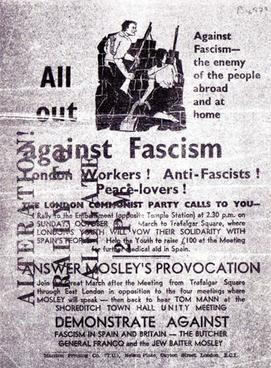
The Battle of Cable Street was a series of clashes that took place at several locations in the inner East End of London, most notably Cable Street, on Sunday 4 October 1936. It was a clash between the Metropolitan Police, sent to protect a march by members of the British Union of Fascists led by Oswald Mosley, and various de jure and de facto anti-fascist demonstrators, including local trade unionists, communists, anarchists, British Jews, supported in particular by Irish workers, and socialist groups. The anti-fascist counter-demonstration included both organised and unaffiliated participants.
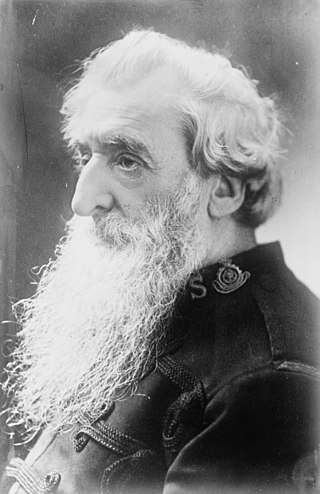
William Booth was an English Methodist preacher who, along with his wife, Catherine, founded the Salvation Army and became its first General (1878–1912). The Christian movement with a quasi-military structure and government founded in 1865 has spread from London to many parts of the world. It is known for being one of the largest distributors of humanitarian aid.

John Alfred Larsson was a Swedish Salvationist, writer and composer of Christian music and hymns, who was the 17th General of The Salvation Army.

William Bramwell Booth, CH was a Salvation Army officer, Christian and British charity worker who was the first Chief of Staff (1881–1912) and the second General of The Salvation Army (1912–1929), succeeding his father, William Booth.

Weston-super-Mare Association Football Club is a semi-professional football club based in Weston-super-Mare, Somerset, England. Nicknamed "The Seagulls", the club is affiliated to the Somerset County Football Association and are competing in the National League South, the sixth tier of English football.
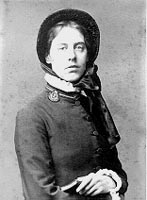
Catherine Booth-Clibborn was an English Salvationist and evangelist who extended the Salvation Army into France and Switzerland against local opposition. She was the oldest daughter of William and Catherine Booth. She was also known as "la Maréchale".

Florence Eleanor Booth was the wife of Bramwell Booth, Second General of The Salvation Army.

The East End of London, often referred to within the London area simply as the East End, is the historic core of wider East London, east of the Roman and medieval walls of the City of London and north of the River Thames. It does not have universally accepted boundaries to the north and east, though the River Lea is sometimes seen as the eastern boundary. Parts of it may be regarded as lying within Central London. The term "East of Aldgate Pump" is sometimes used as a synonym for the area.

Commissioner Charles Henry Jeffries was a British pioneer Salvationist and notable convert, after he left the Skeleton Army and attained the third highest rank possible as an Officer in The Salvation Army.

Detective Inspector Edmund John James Reid was the head of the CID in the Metropolitan Police's H Division at the time of the Whitechapel murders of Jack the Ripper in 1888. He was also an early aeronaut.

Commissioner William Ridsdel was a Commissioner in The Salvation Army, the second highest rank attainable by Officers in the organisation, and the highest 'appointed' rank. An early Salvationist, he joined The Salvation Army in 1873 when it was still called The Christian Mission.
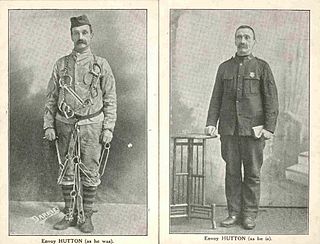
Envoy Richard 'Darkie’ Hutton was a reformed criminal and former member of the Charles Peace gang who spent 23 years in prison before he was converted and became an evangelist and Officer in The Salvation Army.
The Salvation Army has maintained camps in various locations throughout Canada. While some of these sites have ceased operation over the years, many are still in operation.
Richard Plunkett (1788–1832) was a Parish Officer of the Law, variously described as a headborough, beadle or night-constable, in Whitechapel, in the East End of London, between 1817 and 1826. His duties were centred upon the Whitechapel watch-house, from which he and his watchmen had to deal with nocturnal criminality in an area of rapidly increasing population, crowded conditions with poor sanitation, and much urban poverty and squalor. Plunkett's term of office just preceded the Metropolitan Police Act 1829, by which a new system of policing was introduced. Plunkett was often called upon to give evidence at the Old Bailey, the cases being scheduled for hearings two or three times a year. His testimony and that of his officers in these more serious cases show his relations with the population at large, his investigations, pursuits and arrests, often based on personal knowledge of the offenders. The majority of these cases resulted in convictions leading to penal transportation. His work illustrates the real activities of the parish police of Whitechapel just over a decade before the writing of Oliver Twist.
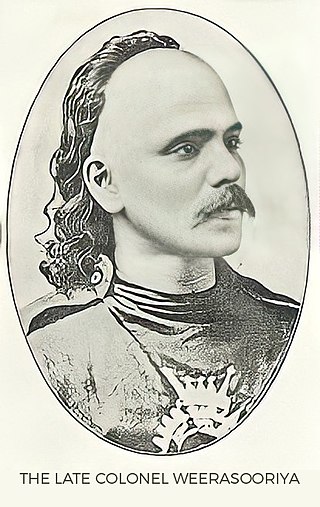
Arnolis (Arnold) Alexander Weerasooriya was the first Ceylonese Colonel of the Salvation Army, also serving as Second in Command of the Indian sub-continent 1887–1888. He was a member of the Weerasooriya family of Dodanduwa and Hikkaduwa, and he is understood to be the first Sinhalese member of the Salvation Army.
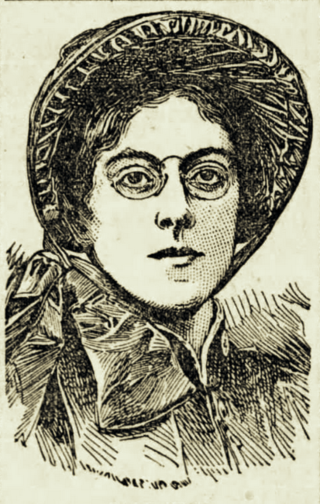
Susie Forrest Swift was an American Salvationist, and later, after converting to Catholicism, a Dominican nun. In both roles, she worked as a magazine editor.
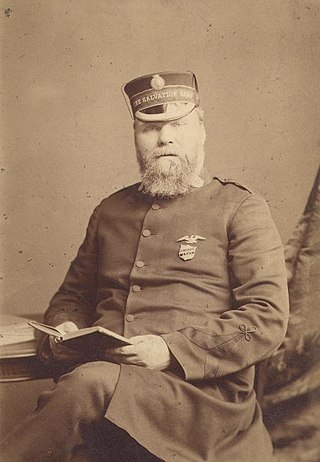
James John Dowdle was a Commissioner in the Salvation Army known as the "Fiery Fiddler" and the "Saved Railway Guard". He was the first Salvation Army Commissioner to be Promoted to Glory.






















